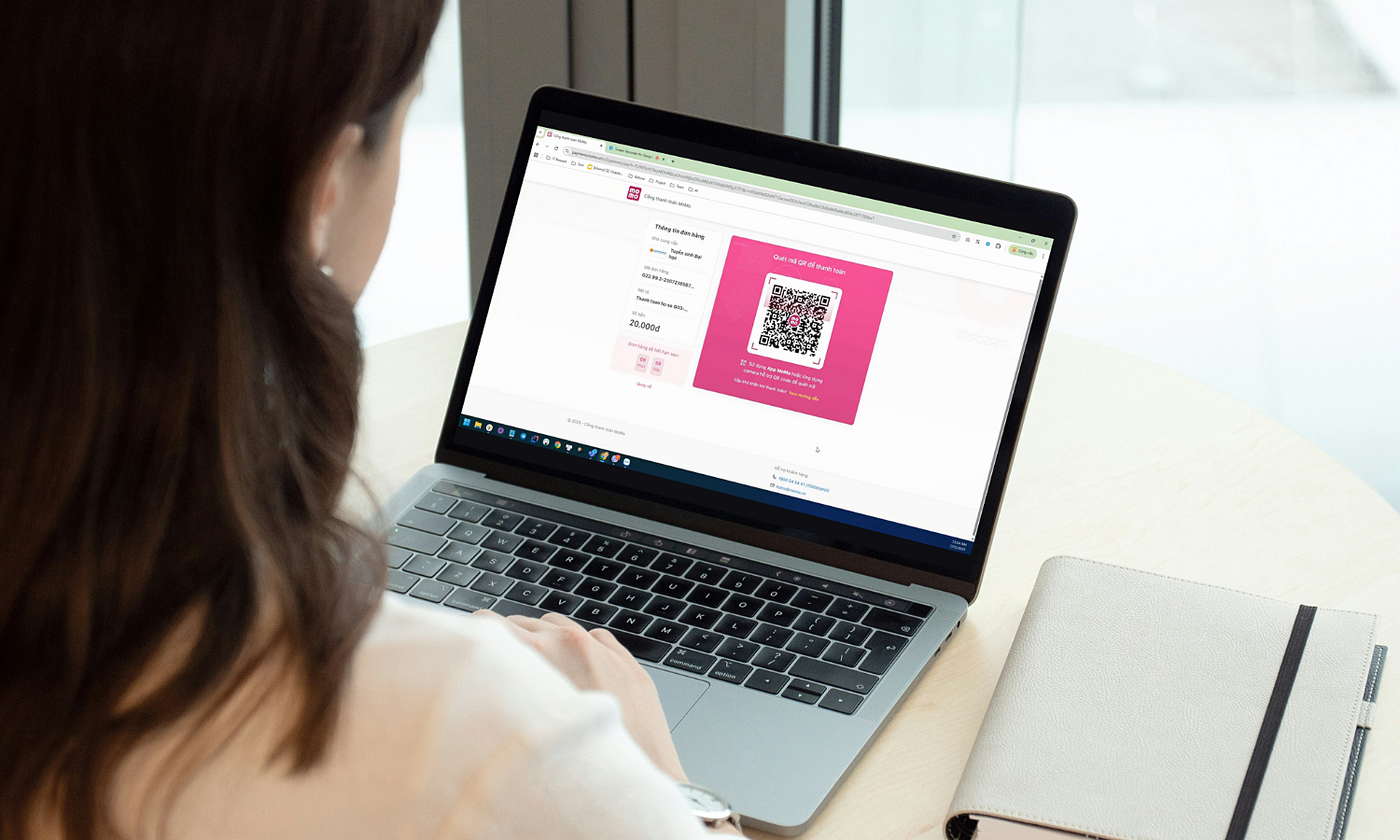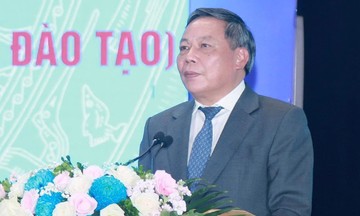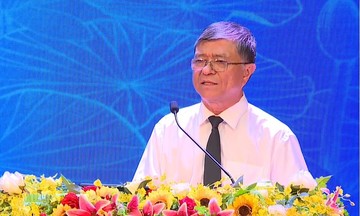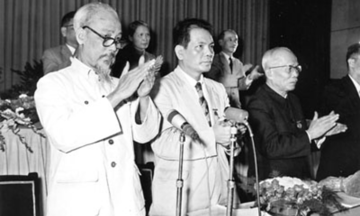Since 2022, the Ministry of Education has collaborated to implement online payment of university application fees through the National Public Service Portal. This solution aims to address the overload at in-person payment points, allowing applicants and parents to conduct transactions conveniently and securely while minimizing errors compared to manual methods.
This year, nearly 850,000 applicants registered for university admissions, with each student applying for an average of 9 programs. The large volume of transactions places high demands on the payment system, requiring stability, accuracy, and continuous operation during peak periods.
To distribute the load effectively, the National Public Service Portal organizes fee payments by time slots, divided into 7 groups based on the provinces and cities where applicants submitted their applications. The system integrates 19 online payment channels from major banks and e-wallets, offering diverse options.
 |
Students pay fees online. Photo: MoMo |
Students pay fees online. Photo: MoMo
Over the past three admissions seasons, MoMo has been a major payment channel, accounting for nearly 50% of total fee transactions nationwide. This year, the platform continues to be chosen by parents and applicants for its convenience and stable processing speed.
In addition to payment support, MoMo also offers special promotions for applicants during the fee payment period. With each successful transaction, users have the opportunity to receive a gift package worth up to 1 million VND, applicable to essential expenses like IELTS exams, telecommunications, transportation, and food, common needs of new university students.
A MoMo representative said that digitizing the application fee payment process is part of a larger effort to promote comprehensive digital transformation, especially in public services. Financial technology platforms are playing a connecting role between citizens and the public administration system, contributing to building a modern, accessible, and transparent payment infrastructure.
According to MoMo's data, as of the end of 30/6/2024, about 3 million users paid for public and administrative services through the platform. In addition, more than 9,000 schools, educational institutions, hospitals, and clinics nationwide have implemented payments through this platform.
After the merger was completed, from 1/7, all provincial-level public service portal interfaces were integrated into the National Public Service Portal. Following the Prime Minister's directive, electronic payment platforms continue to be directly connected to enhance the ability to serve citizens throughout the public service system.
Furthermore, from 7/7, all intermediary service fees for transactions on the National Public Service Portal will be waived for 24 months. This is part of the policy of not incurring costs for citizens and businesses when using online public services. This action demonstrates the joint effort between technology businesses and management agencies in spreading practical value to every citizen.
From familiar activities like paying tuition fees and university application fees, domestic financial technology platforms are increasingly being widely applied in daily life. The presence of these platforms contributes to supporting the popularization of digital finance and promotes the implementation of digital services in the public sector in Vietnam.
Hoang Dan












